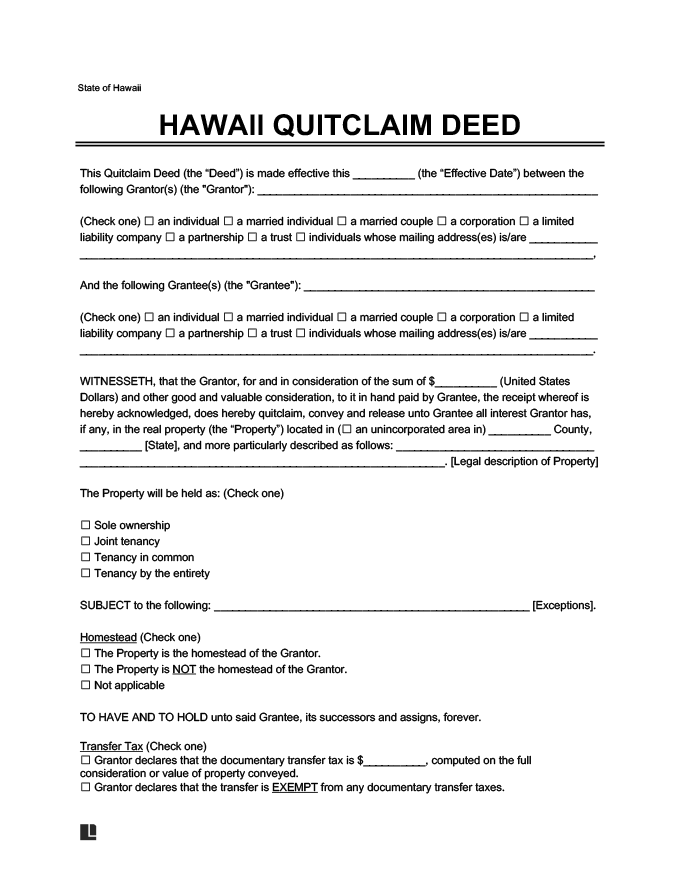The following steps can guide you through the process of writing and filing a quitclaim deed in Hawaii.
Step 1: Write Preparer’s Details and Return Address
Once you’ve selected your form, enter details about the person who is preparing it in the top left-hand corner of the page. This includes their name and mailing address.
Underneath, add the name and address where the forms should be mailed after recording. Typically, this is the grantee’s information.
Step 2: Enter Conveyance Amount
State the amount, if any, being paid for the property. Write the amount in words and numbers.
Step 3: Fill in Grantor and Grantee’s Name and Address
Write the grantor’s full name, address, county, city, and state where they live. Add the same for the grantee.
Step 4: Add the Property’s Legal Description
Document the legal description of the property, including its address and tax map key number. You can add an attachment to the deed if you need additional space.
Step 5: Sign in Front of a Notary
The grantor must sign the document in the presence of a notary public and then print their name and address below. Have the notary officially acknowledge the signature.
Step 6: File the Deed and Wait for Recordation
Take your quitclaim deed to the Bureau of Conveyances in Honolulu. Once filed, they will handle it in one of three ways:
-
- The regular system laid out in Haw. Rev. Stat. Ch. 502: In this process, the registrar of conveyances handles the recording and management of the deed. Once recorded, a deed is considered a part of the public record. According to the Hawaii Bureau of Conveyances, all previously non-registered properties are processed using this system.
- The land court system described in Hawaii Administrative Rules Ch. 16: The assistant registrar handles this process, in which a state certificate confirming ownership of the property is administered. Quitclaim deeds involving property registered with the state at some point since the 1900s are processed using this system.
- A dual system combining the two options: Some deeds qualify to be filed in both the regular and land court systems. If this applies to your document, it will be recorded via the regular system first and the land court system second.
